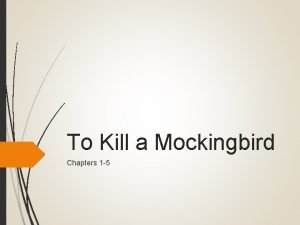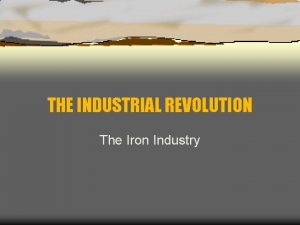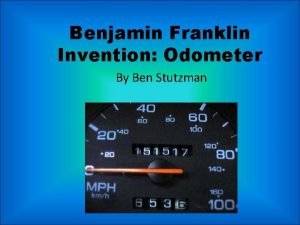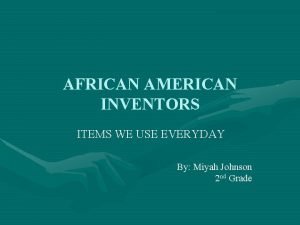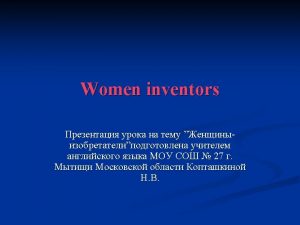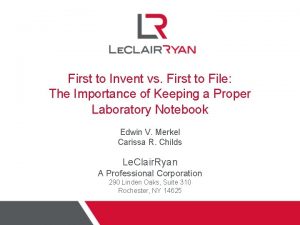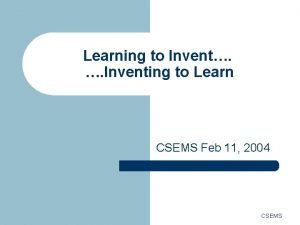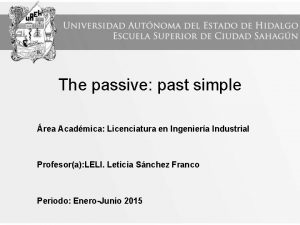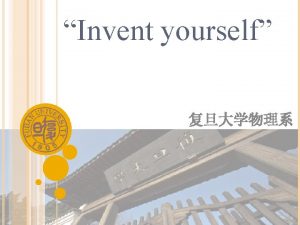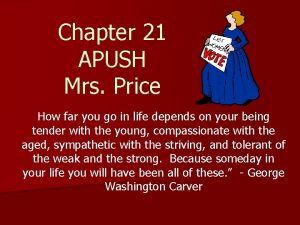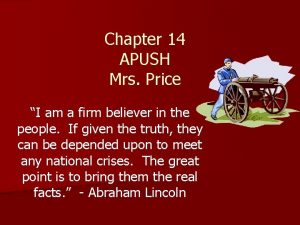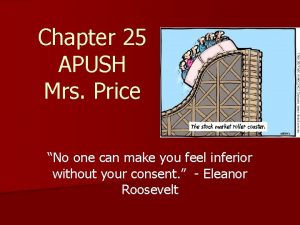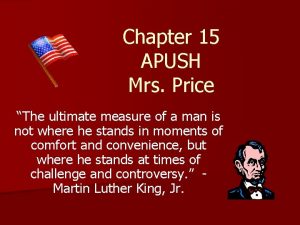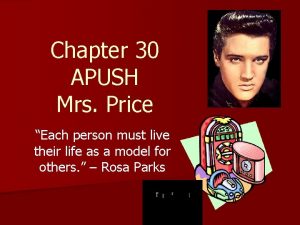Chapter 10 APUSH Mrs Price To invent you



























- Slides: 27

Chapter 10 APUSH Mrs. Price “To invent, you need a good imagination and a pile of junk. ” – Thomas Edison

Demographics n Changes from 1820 -1840 - Population increased - Population concentrated in NE & NW

3 Trends n Population grew quickly (more than Europe) n Population was migrating westward n Population was moving to towns & cities

Changes in 1840 -1860 n Growth of cities accelerated n Immigration rate increased - 2 main sources: Germany & Ireland - German: settled in NW, family groups, had $ - Irish: settled in NE, single women, poor

American Population Centers in 1820

American Population Centers in 1860

Immigration leads to Nativism n Racism n Economic fears n Religious fears n Political fears (Whigs)

Secret Nativist Societies n Native American Association (1837) n Native American Party (1845) n Supreme Order of the Star Spangled Banner (1850) n American Party (Know Nothings 1852)

The American Party

Technological Advances n Canals - Need to move goods internally cheaply - Erie Canal

Erie Canal System

Railroads n 1820 s-1830 s: played secondary role n Weaknesses: - Lines were short; didn’t connect - Tracks were different gauges - Schedules erratic -Wreaks common

Railroads cont. n 1840 s-1850 s: Advances led railroads to be dominant - More miles of track - Consolidation of lines - Support from private & public (land grants) - Further divided North & South


Magnetic Telegraph n Permitted instant communication n Lines more extensive in North n Led to creation of Associated Press

Economic Developments n US businesses grew quickly n Growth of corporations - in 1830 s - Due to changes in laws - Limited Liability n Credit limited growth

Rise of the Factory n Spread quickly in 1820 s n Most productive capacity in NE n Advances in technology - Manufacturing of machine tools - Principle of Interchangeable parts - New sources of energy (coal) - American inventors were prolific

Eli Whitney’s Gun Factory

John Deere & the Steel Plow (1837)

Cyrus Mc. Cormick & the Mechanical Reaper: 1831

Labor n Changes in agriculture led workers to go to factories n 2 systems of recruitment - Whole families from farms to factories - Young women (Lowell or Waltham system)

Lowell Girls

Lowell Boarding Houses

Working Conditions n n n Began to decline in 1830 s & 1840 s More immigrants 12 -14 hour workday $4 to 10/week Artisans began to form craft societies & trade unions

Commonwealth v. Hunt (1842) n Massachusetts Supreme Court n Unions were legal organizations n Strikes were legal

American Society n Increasing concentration of wealth - There was mobility (social & geographical) - Political opportunities n Wealthy - Concentrated in large cities - Culture of wealth was created

American Society cont. n Poor - Significant number in cities - Free blacks, Irish, widows n Middle Class - Fastest growing class in US - Most influential cultural form in US
 Kahulugan ng price support
Kahulugan ng price support They are mrs garcia and mrs castro
They are mrs garcia and mrs castro They are mrs garcia and mrs castro
They are mrs garcia and mrs castro Mrs. darling was ___________ of mrs. s.
Mrs. darling was ___________ of mrs. s. High and lifted up jesus son of god
High and lifted up jesus son of god To kill a mockingbird chapter 1-5 summary
To kill a mockingbird chapter 1-5 summary Henry cort invention
Henry cort invention John logie baird
John logie baird Henry bessemer inventions
Henry bessemer inventions The little green dinosaur talk for writing
The little green dinosaur talk for writing Die 2. ve 3. hali
Die 2. ve 3. hali Benjamin franklin invented the odometer. what does it do?
Benjamin franklin invented the odometer. what does it do? What did frederick m jones invent
What did frederick m jones invent What is an invention
What is an invention Invent holding
Invent holding First to file vs first to invent
First to file vs first to invent Arthur sicard snowblower
Arthur sicard snowblower What words did shakespeare invent
What words did shakespeare invent What game does dill invent
What game does dill invent Learn to invent
Learn to invent Did hitler invent scratch and sniff stickers
Did hitler invent scratch and sniff stickers How did alessandro volta invent the battery
How did alessandro volta invent the battery Past progressive passive
Past progressive passive What do geological engineers invent
What do geological engineers invent What did samuel slater invent
What did samuel slater invent Willam shakespeare facts
Willam shakespeare facts Flying shuttle
Flying shuttle External perspective trap
External perspective trap





